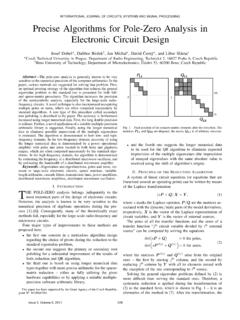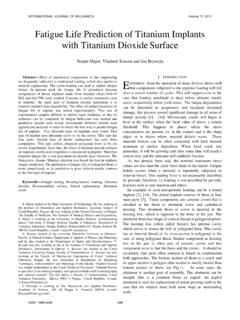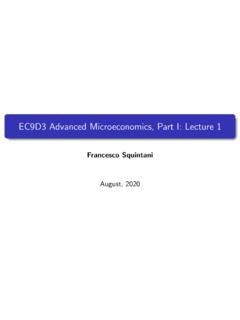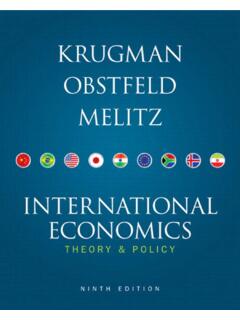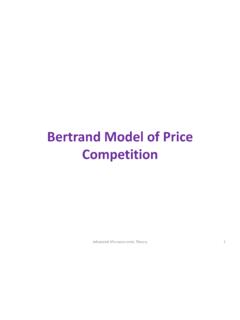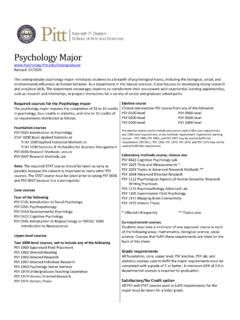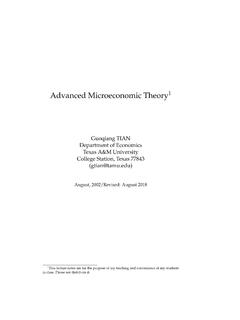Transcription of Economic Land Use Theory and Land Value in Value Model
1 Abstract The paper explores the relationships between land use, land price, and land Value . It draws on the Value Model with explaining and analyzing the relationship between land Value and land use, especially each type of use. The paper starts with an overview of a limited number of Economic theories on the land market and subsequently introduce some well known land use models of Economic theories on the principles. Later, the paper analyzes the variables affecting land use functional structure of the city namely: geographical, Economic , urban, laws and legislation , political, environmental, social, public interest, and demographic variables. Finally, the integrated Value Model will be developed in this study. The Value Model is a mathematical based Model for simulating future land use, especially in valuable lands; that has a foundation in Economic equilibrium Theory .
2 Keywords Economic theories, land use models, land price, land use, land Value , variables, Value Model . I. INTRODUCTION and use is considered one of the essential factors influencing the pattern of urban development. The limited space within cities combined with the growing space requirements for various purposes outlines the framework of the struggle for land for different purposes and by different vested interests. The difficulties in land use planning result from the contradiction between the rapid technological changes which influence urban growth and the slows process of planning which allocates land use. Land use in the city has a unique structure, mostly due to the interactions between its spatial configuration and functions, developing into a patchwork of functional regions of different forms.
3 Governments use land use planning to manage the development of land within their jurisdictions. In doing so, the governmental unit can plan for the needs of the community while safeguarding natural resources. To this end, it is the systematic assessment of land and water potential, alternatives for land use, and Economic and social variables in order to select and adopt the best land use options. Through this process, governments need to use some tools like computer and mathematical models to guide land use to the optimal use. M. E. is with the Architecture Department, Cairo university, Cairo, Egypt. (e-mail: A. S. is with the Architecture Department, Cairo university, Cairo, Egypt. (e-mail: U. N. is with the Architecture Department, Suez Canal University, Ismailia, Egypt.))
4 (e-mail: S. A. is with the Architecture Department, Suez Canal University. Ismailia, Egypt. (Mobile: 002-01229014445; e-mail: Past decades showed strong advancements in the development of operational land use models. Geographic information technology, faster computers, besides the availability of better data made it possible to draw a comprehensive models. Advances in theoretic development went a bit lower. Theoretic underpinning of models still in many cases a problem and models rely on statistic analysis to Model relations between land use and all kinds of variables. According to all above, the study focuses on developing an integrated Model in order to get a better understanding of land use in terms of land Value named the Value Model .))
5 The Value Model is mathematically based Model for simulating future land use, especially in valuable lands; that has a foundation in Economic equilibrium Theory . II. ANALYSIS OF DEVELOPMENT POLICY IN EXISTING URBAN AREAS The development policy of the existing urban areas is considered one of the policies of the urban development strategy of the state, which is based on two parallel axes of the schematic thought: A. Axis 1 It concerns about developing the desert areas and establishment of new cities. B. Axis 2 It includes improving the existing urban structure through using empty spaces inside urban centers, to reduce district accumulation, to deal with pressure problems on infrastructure Figure (1) shows urban development strategy in Egypt.
6 Fig. 1 Urban Development Strategy , Source: Abdel Kader, Lamea, PhD thesis. Economic Land Use Theory and Land Value in Value Model Mohamed M. El-Barmelgy, Ahmad M. Shalaby, Usama A. Nassar, and Shaimaa M. Ali L Upgrading of the Existing Urban Structure Development of Desert Areas Development of the Populated Regions National and Local Planning The Establishment of New Cities Implementation of Housing and Facilities Urban Development Strategy INTERNATIONAL JOURNAL OF ECONOMICS AND STATISTICSV olume 2, 2014 ISSN: 2309-068591 and public services, and to manage future urban growth trends on agricultural land through preparing strategic plans for existing cities. This may help to improve the urban environment , reducing the population density , providing services and infrastructure ,and limiting the spread of informal areas throughout the country.
7 III. FRAME WORK A. Problem Identification According to all the above, the main problem is in the lack of an integrated system to guide the functional and spatial change in land uses and the absence of controlling regulations that must be adopted to direct land to its optimal use, primarily in the case of ignoring the land Value as a significant variable affecting the spatial change of uses. In this context, any-project for guiding the spatial change of land-uses comes at a crucial stage not only as a reaction to solving the existing problems of traffic congestion, pollution, and informal urbanism, but also as a step towards improving the Greater Regions to face the future and restore its vitality, cultural flame , and civilizational position. B. Research Objectives The goals of our study are to compare the Economic Theory behind the land use with the working of the land market in reality.
8 This can be done through a Value Model to conceptually define the role of the land Value as a tool to control land uses and their impact on the development process as a whole. This approach aims to reach the sustainability of land development by identifying the most significant variables that are affecting the land use structure through the Value Model . C. Research Hypothesis The study proposes a developed methodology called Value Model which may achieve the required balance that is resulting from the interactions between land Value , land uses and other variables through building a Model that translates these interactions. D. Research Structure Fig. 2 shows the concept map of the study to achieve the previous objectives.
9 Fig. 2 The concept map of the research source : Researchers Research concept map Research Objectives Research Hypotheses Development Strategy Problem Identification Introduction Research Introduction 1: Economic Theories on Land Prices - Land as a special good. - Government intervention to control land uses. - Traditional Theories. Ricardian - Von Thunen - The bid rent Theory Alonso, 1964 - Mills & Hamilton, 1964 Analytical Descriptive Approach 2: Economic Based Land Use Models. Analytical Descriptive Approach - Ravenstein & Young & Reilly - Lowry,1964 - Grothe,1998 - Wilson, 1967-1970 - Batten & Boyce, 1986 - Huff, 1964 - Briassoulis, 1964 - Mills, 1972 - Fujita,1989 3: Variables Affecting Land Use Functional Structure of the City.
10 Analytical Comparative Approach - Geographical Variables. -Environnemental Variables. - Economic Variables. - Social Variables. - Urban Variables. - Public Iinterest Variables. - Laws and Legislation Variables. -Demographic Variables. - Political Variables. 5: Research Findings and Conclusions 4: The Value Index - The variables affecting on each type of use. - explaining the relationship between land Value and variables and each type of use. - Proposed Value Model Analytical Deductive & Statistical Approaches Explaining and Analyzing the efficiency of applying land Value and its role in controlling land use "Guiding the spatial change of land use" INTERNATIONAL JOURNAL OF ECONOMICS AND STATISTICSV olume 2, 2014 ISSN: 2309-068592 Industry Distance Commercial Residential Rental Value Economic return IV.
